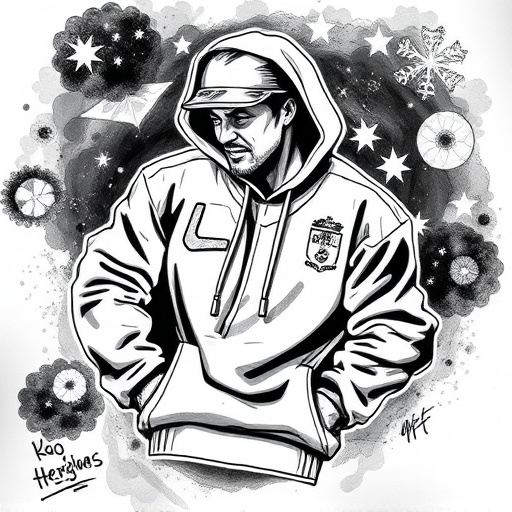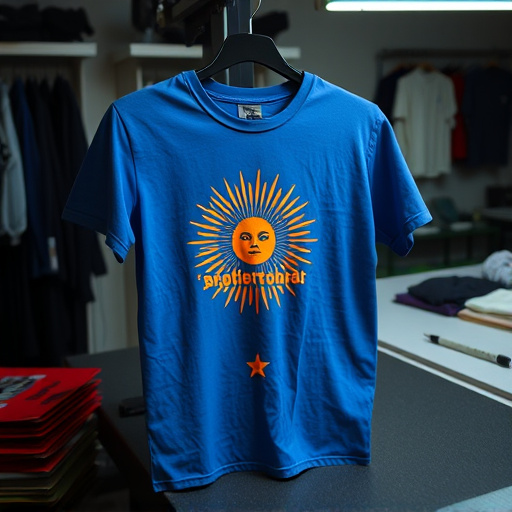Technological advancements in Direct-to-Fabric (DTF) innovation have transformed custom printing and design, offering unparalleled flexibility, precision, and vibrant colors. Data analytics plays a pivotal role in DTF development, enabling efficient, high-quality printers tailored for various applications like T-shirt printing. Consumer demand for unique, personalized garments drives rapid advances in DTF technology, promising to revolutionize apparel creation with minimal waste and streamlined production.
Rapid advances in DTF (Digital Transformative Technologies) innovation are reshaping our world. This article delves into the driving forces behind these breakthroughs, exploring how technological advancements, data analytics, and evolving market demands are pushing the boundaries of what’s possible. By understanding these key factors, we uncover new frontiers in DTF development, revealing trends that will define the future of digital transformation across industries.
- Technological Advancements Pushing Boundaries of DTF Innovation
- Data Analytics: Unlocking New Frontiers in DTF Development
- Market Demands and Consumer Trends Shaping DTF Future
Technological Advancements Pushing Boundaries of DTF Innovation

Technological advancements have been the driving force behind rapid progress in DTF (Direct-to-Fabric) innovation, pushing the boundaries of what’s possible in custom printing and design. This cutting-edge technology has revolutionized the way clothing brands and individuals create unique, personalized garments by enabling direct printing on various fabrics without the need for traditional screening or plate preparation.
The digital nature of DTF allows for an unprecedented level of flexibility and precision, making it an attractive option for those seeking Custom graphic tees. With advancements in inkjet technology, printers can now achieve vibrant colors, crisp details, and a diverse range of print effects, from subtle textures to glossy finishes. This versatility has opened doors for designers to explore innovative patterns, logos, and artwork dtf for clothing brands, ensuring their designs make a lasting impression.
Data Analytics: Unlocking New Frontiers in DTF Development

In the realm of DTF Innovation, data analytics stands as a powerful catalyst, propelling advancements in direct to fabric (DTF) printing technologies. By analyzing vast datasets encompassing consumer trends, material properties, and print patterns, developers can unlock new frontiers in DTF development. This insights-driven approach enables the creation of more efficient, higher-quality dtf printers, tailored for diverse applications, including dtf printing for t-shirts.
Data analytics also facilitates a deeper understanding of the intricate relationship between design, fabric type, and print techniques, enhancing precision and customization. As DTF technology continues to evolve, staying informed through data-driven insights is essential, ensuring that innovations in this field meet the ever-changing demands of both manufacturers and end-users, while exploring new possibilities for dtf meaning across industries.
Market Demands and Consumer Trends Shaping DTF Future

In today’s competitive market, consumer demands and trends are acting as catalysts for rapid advances in DTF (Direct-to-Fabric) innovation. As folks seek unique, personalized, and high-quality garments, DTF technology is increasingly seen as a game-changer in the apparel industry. The need for efficient and cost-effective methods to customize clothing has led to a surge in interest for DTF transfer sheets and best DTF printers.
This shift is further fueled by evolving consumer preferences for eco-friendly and sustainable products, driving the adoption of DTF heat transfer paper. As the world navigates a landscape that values environmental responsibility, DTF innovation offers a promising solution by minimizing waste and streamlining production processes. In light of these trends, the future of DTF looks vibrant, with continuous technological advancements poised to reshape the way we create and enjoy personalized clothing.
Rapid advances in DTF innovation are driven by a confluence of technological advancements, data analytics insights, and evolving market demands. As we’ve explored, these factors collectively push the boundaries of what’s possible in DTF development. By harnessing cutting-edge technology and understanding consumer trends through data analytics, the future of DTF looks promising, offering exciting possibilities for both industry pioneers and consumers alike.














